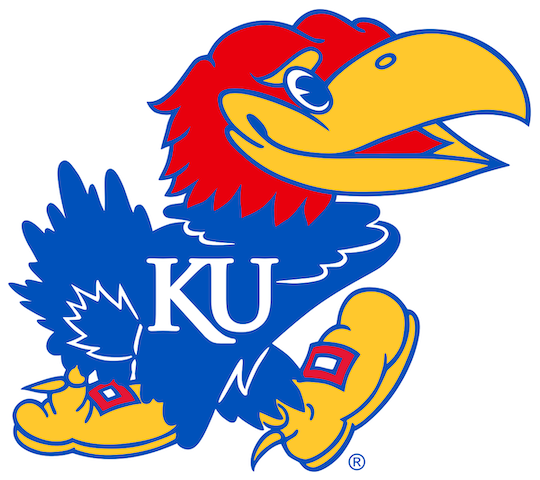Naismith Named One of 8 Wonders of Kansas People
Oct. 28, 2010
INMAN, Kan. – James Naismith, the inventor of the game of basketball and the first basketball coach at the University of Kansas, has been named one of 8 Wonders of Kansas People by the Kansas Sampler Foundation.
For the past six weeks, about 13,000 online and paper ballot votes from every state in the country determined the outcome of the 8 Wonders of Kansas People contest. Joining Naismith on the list is KU alumnus William Allen White, a Pulitzer Prize-winning newspaper editor and voice of the American heartland for almost five decades at the Emporia Gazette. KU’s journalism school is named for White.
Naismith, then a physical education instructor at Springfield (Mass.) College, invented basketball in 1891. His innovations in sports did not stop with basketball. As a football player at Springfield under famed Coach Amos Alonzo Stagg, Naismith, because of bruised ears from rough play, cut a football lengthwise and placed it over his head, thus inventing the first football helmet.
Naismith joined the University of Kansas faculty in 1898 and served as KU’s men’s basketball coach for nine seasons (1898-1907). He also served as director of physical education. He retired from active teaching in 1937 and died two years later at the age of 78. The Basketball Hall of Fame, located in Springfield, Mass., is named after him.
The “People” contest is the last in a series organized by the Kansas Sampler Foundation to encourage travel in Kansas and educate the public about the architecture, art, commerce, cuisine, customs, geography, history and people of Kansas. The contests began in June 2007. To see all contest results and learn more about each entry, go to www.8wonders.org.
A photo guidebook featuring all 216 entries in the nine 8 Wonders of Kansas contests will debut in April at the grand opening reception for the 8 Wonders exhibit at the Eisenhower Library in Abilene.
The top 8 vote getters for the 8 Wonders of Kansas People, in alphabetical order, are:
Amelia Earhart was the first woman aviatrix to fly solo across the Atlantic Ocean. She set many other aviation records but disappeared in a record-setting attempt around the equator in 1937. 1897-1937. Atchison.
Buffalo Soldiers were members of an all-black regiment in the U.S. Army. The first unit to be given the name Buffalo Soldiers, the 10th Cavalry, was formed on September 21, 1866 at Fort Leavenworth.
Carry A. Nation was a hatchet-wielding crusader in the early 1900s and part of the Women’s Christian Temperance Union campaign to prohibit alcohol. 1846-1911. Medicine Lodge, Kiowa.
Emil J. Kapaun, a priest and military chaplain is being considered by the Vatican for sainthood because of his exemplary service and dedication while being held in a Korean prisoner of war camp in 1950-1951. 1916-1951. Pilsen.
George Washington Carver, an agri-scientist, botanist, educator, humanitarian, and inventor, was best known for discovering hundreds of uses for peanuts, soybean, sweet potatoes, and pecans and for developing crop-rotation methods. 1864-1943. Minneapolis, Beeler.
James Naismith was the man who invented basketball and started the University of Kansas basketball program in 1898. 1861-1939. Lawrence.
Martin and Osa Johnson were pioneering wildlife filmmakers, photographers, authors, and explorers who traveled to the exotic realms of Africa, Borneo, and the South Seas recording cultures (that no longer exist). 1884-1937; 1894-1953. Chanute.
William Allen White, known as the “Sage of Emporia,” from defending the 1st Amendment to fighting the Ku Klux Klan, the Pulitzer Prize-winning newspaper editor was the primary voice of the American heartland for almost five decades. 1868-1944. Emporia.
Dwight D. Eisenhower was not eligible for the People contest because he was already chosen to be one of the overall 8 Wonders of Kansas.
Foundation director Marci Penner said, “The results show a colorful range of people that have called Kansas home. There were quite a number of lesser known people on the list and we hope that the contest has helped the public learn more about who we are as a state.”
The 16 remaining finalists were: Amazon Army, Crawford County; Arthur Capper, Garnett, Topeka; Bernhard Warkentin, Newton, Halstead; Buster Keaton, Piqua; Clyde V. Cessna, Rago, Kingman; Cyrus K. Holliday, Topeka; Frederick Funston, Iola; Haskell Indian Nations University, Lawrence; Jack Kilby, Great Bend; John Brown, Osawatomie; Joseph McCoy, Abilene, Wichita; Mary Ann “Mother” Bickerdyke, Bunker Hill, Ellsworth; Olive Ann Beech, Wichita, Waverly; Walter Chrysler, Ellis, Wamego; Walter Johnson, Humboldt, Coffeyville; William Inge, Independence.
In the course of the three-year effort, more than 103,000 people voted in the nine contests, including innumerable schools; and more than a million dollars of newspaper, radio, and TV coverage was generated for the 216 entries. Presently, 1.3 million results can be found on Google for the contests. Penner said, “The best part is that the tremendous exposure for this contest definitely increased the public’s knowledge about Kansas. Many of the contest participants reported a big increase in customers or visitors. It just shows the power of sharing Kansas news in a way that interests the public.”

